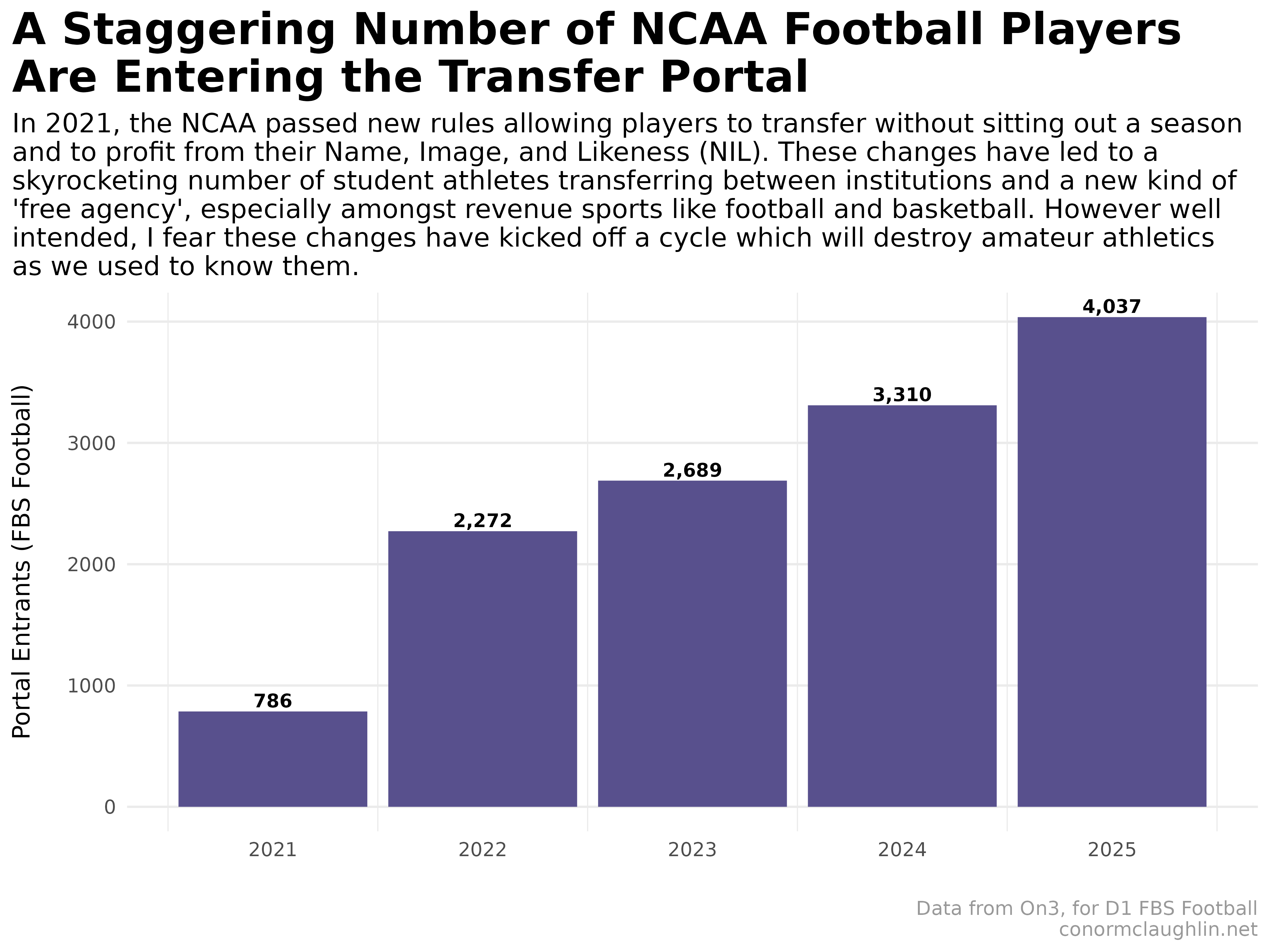Humor me with a quick thought experiment - imagine an industry. A handful workers in this industry are extremely well paid, while vast majority earn almost nothing. Many workers feel they are underappreciated in their current roles, so they frequently hop between employers. There are few ethical standards, so both workers and employers push the boundaries of acceptable behavior in pursuit of money and opportunity.
Surely we’re talking about a difficult power-law industry, right? Maybe Hollywood or Wall Street?
Nope. The industry that best fits the criteria above is actually college sports - home of the dying “student athlete” archetype.
What the Data Shows Us
What happens when transferring schools becomes frictionless, and athletes are suddenly allowed to participate in uncapped financial competition?
Thanks to dual reforms passed by the NCAA in 2021, which removed the one-year redshirt requirement for transfers and allowed students to earn money from their Name, Image, and Likeness (NIL), we are starting to find out!

It’s clear we have yet to reach a new equilibrium - since 2021, the number of students entering the transfer portal in both football and basketball has surged. At the same time, the power dynamics of those sports has begun to change significantly, rewarding schools with the financial firepower to exploit this new “free agency” - and leaving others behind.
We saw the downstream effects of this in the spring, with March Madness full of chalk and down on upsets. It feels inevitable that successful mid-major players will immediately be poached by a major conference team, feeding a cycle in which the rich get richer and the smaller programs are left holding the bag, all while meaningfully disrupting the schooling of the students in question.
To be clear - I’m glad that students are being compensated for some of the revenue they generate for their conferences and the massive media companies those conferences are in league with. However, I am deeply skeptical that the NCAA has created the right framework for doing so, and I worry that the old value system of college sports, focused on continuity, school loyalty, and a level(er) playing field between conferences, may be lost for good.